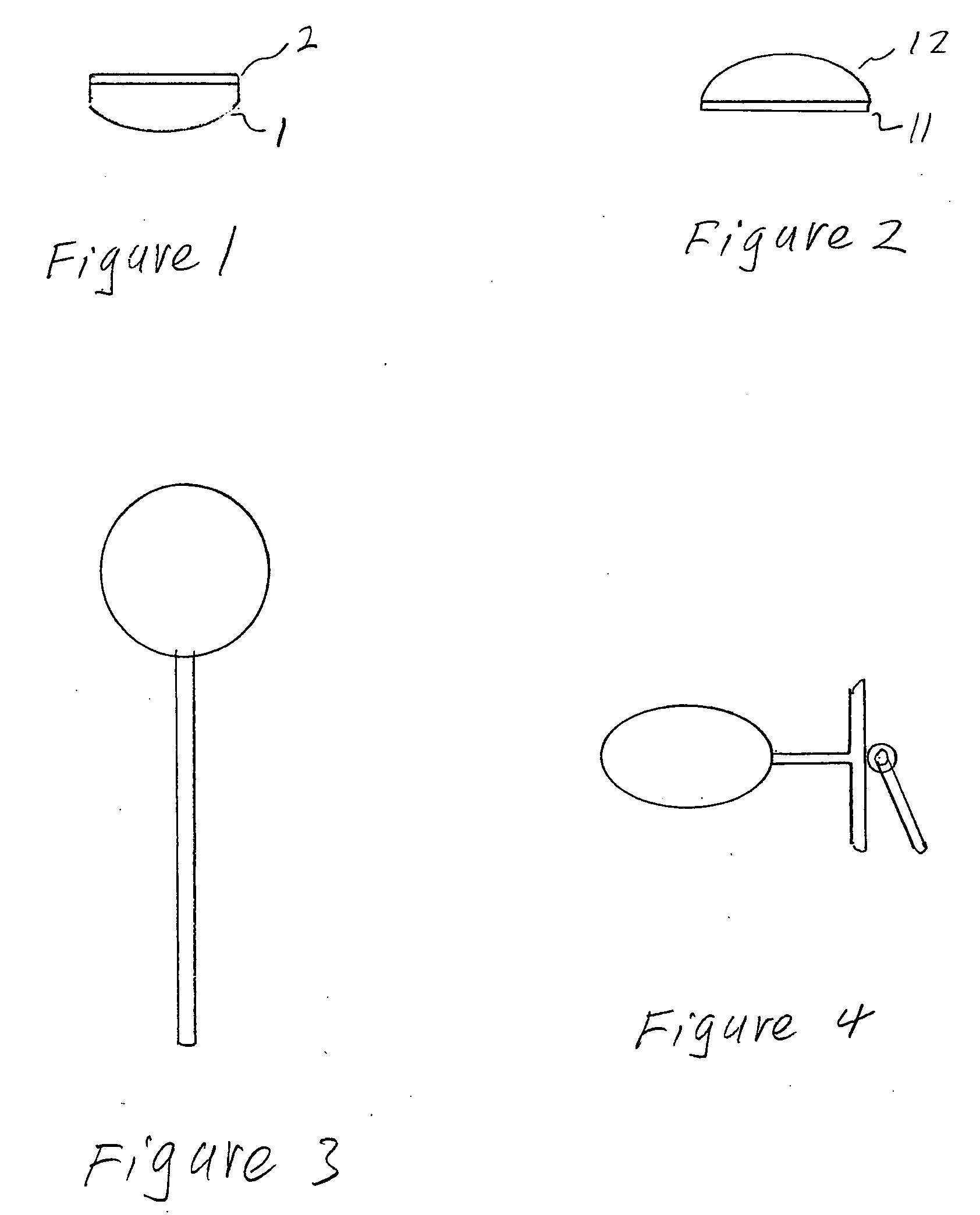Adherent polyol troche
a polyol troche and adhesion technology, applied in the field of adhesion of polyol troche, can solve the problems of insignificant adhesion and rapid dissolution of xylitol troch
- Summary
- Abstract
- Description
- Claims
- Application Information
AI Technical Summary
Benefits of technology
Problems solved by technology
Method used
Image
Examples
Embodiment Construction
[0023]The composition of predominantly solid phase polyol molecules, particularly xylitol, with a reduced rate of dissolution in saliva is made by mixing polyol molecules with substantial amounts of molecules of a hydrophilic gum that swell when exposed to water. The molecules of hydrophilic gums may be one or more of any of cellulose gum, including carboxymethylcellulose (CMC), methylcellulose, and hydroxypropylmethylcellulose, any of the other synthetic hydrophilic gums such as carbopol, polyvinyl acid, and polyacrylic acid, any hydrophilic natural vegetable gum such as xanthan gum, konjac gum, tara gum, gellan gum, locust bean gum, acacia gum, alginate, carrageenan, agar, and pectin, or a hydrophilic protein gum such as gelatin. For a xylitol troche, low viscosity CMC at about 3.4% is preferred. Instead of xylitol, the polyol molecules may be any polyol that is solid at room temperatures, such as erythritol, sorbitol, mannitol, maltitol, isomalt, and lactitol.
[0024]In one embodim...
PUM
| Property | Measurement | Unit |
|---|---|---|
| Fraction | aaaaa | aaaaa |
| Fraction | aaaaa | aaaaa |
| Fraction | aaaaa | aaaaa |
Abstract
Description
Claims
Application Information
 Login to View More
Login to View More - R&D
- Intellectual Property
- Life Sciences
- Materials
- Tech Scout
- Unparalleled Data Quality
- Higher Quality Content
- 60% Fewer Hallucinations
Browse by: Latest US Patents, China's latest patents, Technical Efficacy Thesaurus, Application Domain, Technology Topic, Popular Technical Reports.
© 2025 PatSnap. All rights reserved.Legal|Privacy policy|Modern Slavery Act Transparency Statement|Sitemap|About US| Contact US: help@patsnap.com

